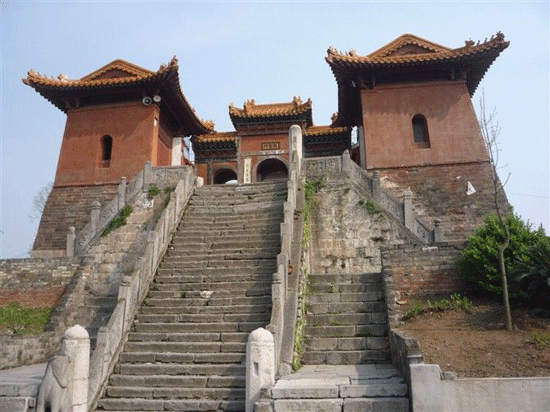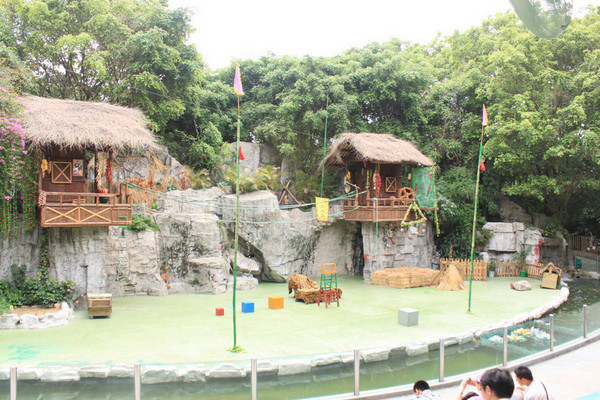太晖观
4A地址: 暂无
开放时间: 暂无

景点印象
离古城西门不远,开车很好找。山门内原建筑早已无存,空旷的院内有大树上开硕大白色花朵,不知何名,走近一缕清香。
荆州三观之一,明代建筑,全国文物保护单位,典型的高台建筑,曾经的明代王府。
这个点十分值得一看,这是明代湘王的官邸,因为建筑仿制皇宫,被当时准备削藩的明皇太孙朱允炆抓住把柄,湘王先是将其改为道观(明朝崇尚道教),后不堪逼迫而自焚,这个建筑遗留至今,其精巧细致的建筑和武当建筑一样可以媲美!门票5元,现今被道士盘踞,香客可免票。
小小的寺庙,不过不要门票,顺路可以来看看咯,本人认为一般般吧
坐26路从城里可直达,由道教协会管理,所以保存和维护尚好。只有正中的金殿为古建筑,其他均为后建。陡峭的斜坡上一座巍峨的道观挺立,原是作为皇宫规格而建,雕刻精美。
消失的荆州古城系列(174)持续更新中 太晖观祖师殿前的高台栏杆上雕刻着不少绣像故事,岁月久远剥蚀严重……
The Taihun Temple, also known in English as the Sunshine Temple, is well out of the tourist path on the west side of Jingzhou. The only way I ever even knew it existed was that I bought a pack of Jingzhou postcard at the little souvenir shop just inside the East Gate. My friend and I showed the postcard (with the name of the place on it written in Chinese) to a taxi driver, and he took us out. Even he was unsure; he had to stop and ask directions three different times, and he was from Jingzhou. However, when he finally found it, he had a huge grin as he was so proud of himself for figuring it out. I recommend the tactic of showing postcards to the taxi drier if you don't speak much Chinese. From the road, we went through a brightly painted, fairly modern gate into a run-down looking field. Along the way down the path, we passed an area with stone statues of people and animal, lined up facing each other along a side path. We came to wall with a huge ying-yang painted on it. On each side was a gate; to the right, the gate led to a run-down residential area. To the left, the gate led to the main temple grounds. Just inside the gate, one path led straight ahead to the main temple; another path turned right and went to a boarding school for disabled (mostly deaf, but a few blind and other things) children. On our way back out, we met a teacher from the school (who was handicapped herself), and she begged us to come and talk to the kids for a while. They were so excited to see foreigners; we're a rare sight out there. We took lots of pictures together and the teacher translated some conversations (she spoke fairly good English). As for the temple itself, a row of evergreens lined the path to the temple courtyard. Four plain rectangular buildings in front of the temple housed a profusion of idols, big and small. The main building of the temple is built up on a mound, so that it towers over everything else. Steep worn steps lead up to the main door. You can see their age by the way the steps sag in the middle from years of wear. As we were climbing the steps, an elderly man walked up. He had a cane, but he slowly made his way up the steep steps, hanging on to the rail for support. He talked to us for quite a long while, telling us many stories. Unfortunately, we didn't speak enough Chinese to be able to fully understand them. He tried his best, though, and used expressive gestures. He was telling us something about how he had lived near the temple as a boy, and there was the war, and bombs were falling around (and this had a connection to his bad leg), and he had fought in the war, and still lived within sight of the temple. Or something like that. He was very adamant about things falling from the sky and blowing up. Inside the main wall of the temple, there is an open air courtyard around a central building. The central buildings holds the large golden idol, silk hangings, incense burners, and dedicated objects as are typical to a taoist temple. Along the wall in the courtyard, there are incense ovens set into the wall at intervals. As we were looking around, an elderly lady came in. She was dressed in old-fashioned Chinese peasant clothing, like you would see in an old book. She seemed to be very old, and she walked slowly and a bit hunched, but nonetheless she managed to get down and prostrate herself in front of each oven after lighting a fire for incense in it. She gathered us (two American women, teacher at the university) and three Chinese men who seemed to be tourists, and demonstrated to us how we should light the incense, and how we should bow in front of it, and gave us all a piece of candy. Around the inside of the walls, there are rows of carvings depicting all sorts of people in different scenes; most of them are worn with age but still beautiful. We spent quite a long time looking at each scene. As we were leaving, we saw the students from the boarding school being herded to the temple for their daily prayers. The people we met there were so excited to see foreigners that they welcomed us and showed us around their temple with pride. It's really interesting to see a temple that is in regular use as a place of worship, and not at all concerned about tourists. The Taihun Temple is definitely worth a few hours of your time if you are in Jingzhou. Note: I don't think there was any kind of fee to enter; I don't really remember. If there was, it was minimal. Be prepared to walk a ways back out to the main road to catch a taxi back. It's in a residential area, so it would be easier to take food/water with you if you think you will want anything.




